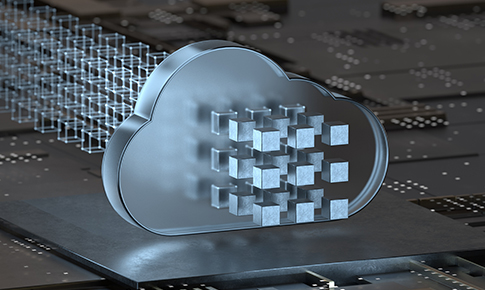Importance of
Edge AI in 5G
Vishwamitra Nandlall, Vice President, Technology Strategy and Ecosystems at Dell Technologies, talks to our host, Pranjal Sharma, on the logic and principles behind Edge computing. And how Artificial Intelligence has enabled IoT devices to team up with Edge computing to unlock the combined force of Edge AI.
The Internet as we know it has reached the edge. Literally!
We all know machine learning has been around for quite a while, so what suddenly makes edge AI so unique? To figure this out, we must consider what the 'edge' in Edge AI means. With edge AI, IoT devices are becoming smarter. And edge devices can now make predictions, process complex data, and administer solutions. Edge computing offers a range of opportunities, from helping lab radiologists pollinate plants, driving cars down the freeway, cloud gaming, and creating Google stadiums. That's just the beginning! Edge applications are driving the next wave of AI towards scaling up efficiency in business operations and improving our lives at home, work, school, and transit.
Keeping it real
But if the edge is mostly about reducing latency, what role does AI have, and how does it complement this ability of edge?
"It varies according to the critical applications that will be used when you're at the edge. Since AI algorithms are capable of understanding language, sights, sounds, smells, temperature, faces, and other analog forms of unstructured information, they're instrumental in places occupied by end users with real-world problems. These AI applications would be impractical or impossible to deploy in a centralized cloud or enterprise data center due to latency, bandwidth, and privacy issues.
For example, edge IoT devices can process operating conditions in a factory and even predict if a piece of machinery could break down, thus enabling companies to ensure that predictive maintenance is done to avoid large-scale damage and loss," added Nandlall. In the future, security cameras equipped with edge AI may no longer only capture videos but will also be able to identify people and footfalls. Since edge technology analyzes data locally rather than in a faraway cloud delayed by long-distance communications, it responds to users' needs in real-time.
Edge vs. Cloud
To put it simply, edge AI uses artificial intelligence in machine learning algorithms running directly on Edge devices. Both edge and cloud computing perform the same functions, like processing data and running algorithms, although the main difference lies in where the computing takes place. In Edge computing, the processing occurs on IoT devices deployed in the field, like smartphones and microcontrollers. In contrast, in cloud computing, the processing occurs at a centralized location, like a data center.

Referring to Dell, Nandlall added, "Dell is an infrastructure provider, and we believe that Cloud computing has become an important aspect of AI progress as business activities at work have grown. The edge computing industry will expand in the future. As it evolves, much of the production level capabilities and assurances that we want in AI are lacking in centralized computer environments."
Team up with your digital twin
So, how is the digital transformation of businesses and automation at scale a reality? By using the phenomena of the digital twin, a precursor to the metaverse, we're all trying to inhabit immersive reality. A good example is the AI-enabled John Deere tractor that gives the farmer information about soil content, planting, seedlings, etc. IoT, edge, and digital twin are terms used to convey a mental model of how solutions can be designed and delivered.
Digital twins are moving towards covering huge asset classes, from quick service restaurants to supply chains to real estate and retail spaces, so their capabilities can be tailored for each of these industries.
But can companies like Dell offer these edge computing solutions on their own?
"Very large-scale enterprises that have invested in research and development, have their applications and their orchestration capabilities and are looking at building a bespoke system can deliver independently. We're still early in the deployment stage and the edge AI available is in the trials and experiment stage. The Internet has become very densely peered, almost a horizontal network instead of a hierarchical one. At the center of the Internet, all these hyper-scale players bought content delivery networks at the heart of the Internet. So a lot of the Internet infrastructure got sucked up into these hyper-scalers. Today, much of the Internet is opaque and hidden inside the world's Google, Facebook, and Apple. With edge, we have an opportunity to open up these networks again because all of our transactions will get relayed through these Edge devices," added Nandlall.
Edge computing is also a good way for users to reclaim their privacy that could change the economic nature of how the Internet is monetized, create a reasonably large revolution over time, rethink how the rules are going to work, and in short, make an Internet where one can just name the service and the network would then take care of where to route it.
said Nandlall
- Tune into:
-
 Apple
Apple
-
 Spotify
Spotify
-
 Amazon Music
Amazon Music

